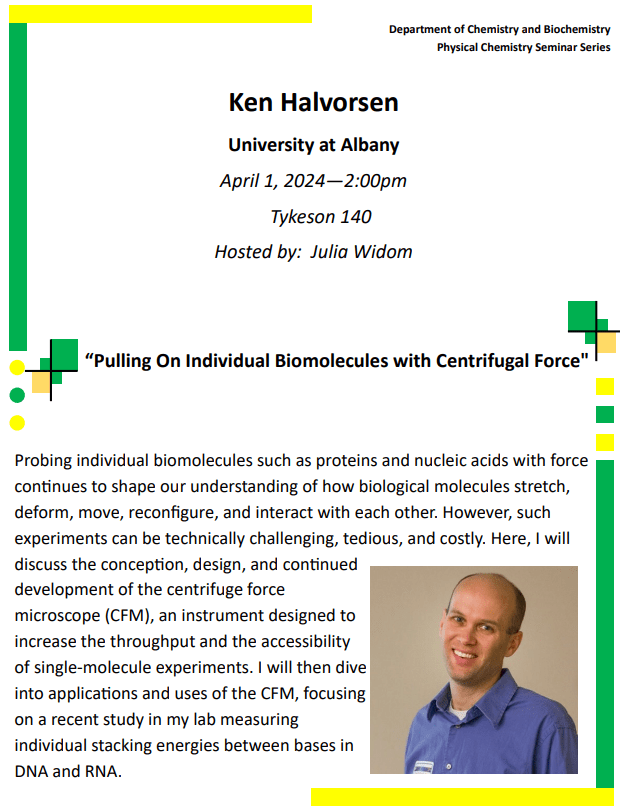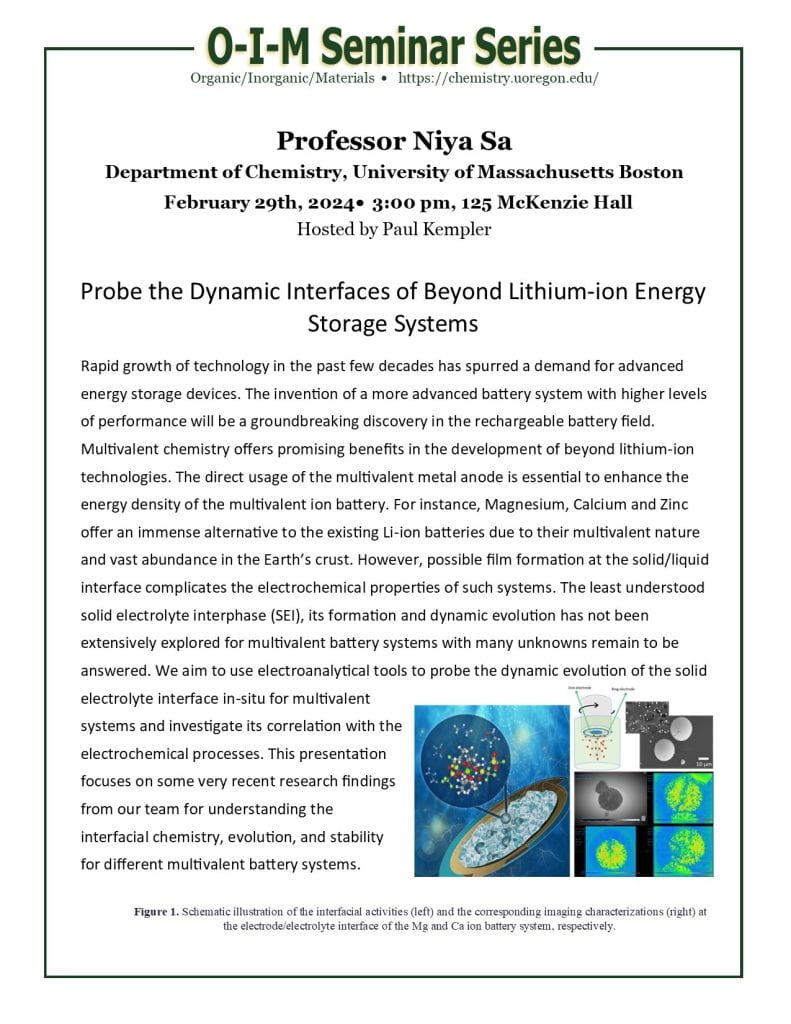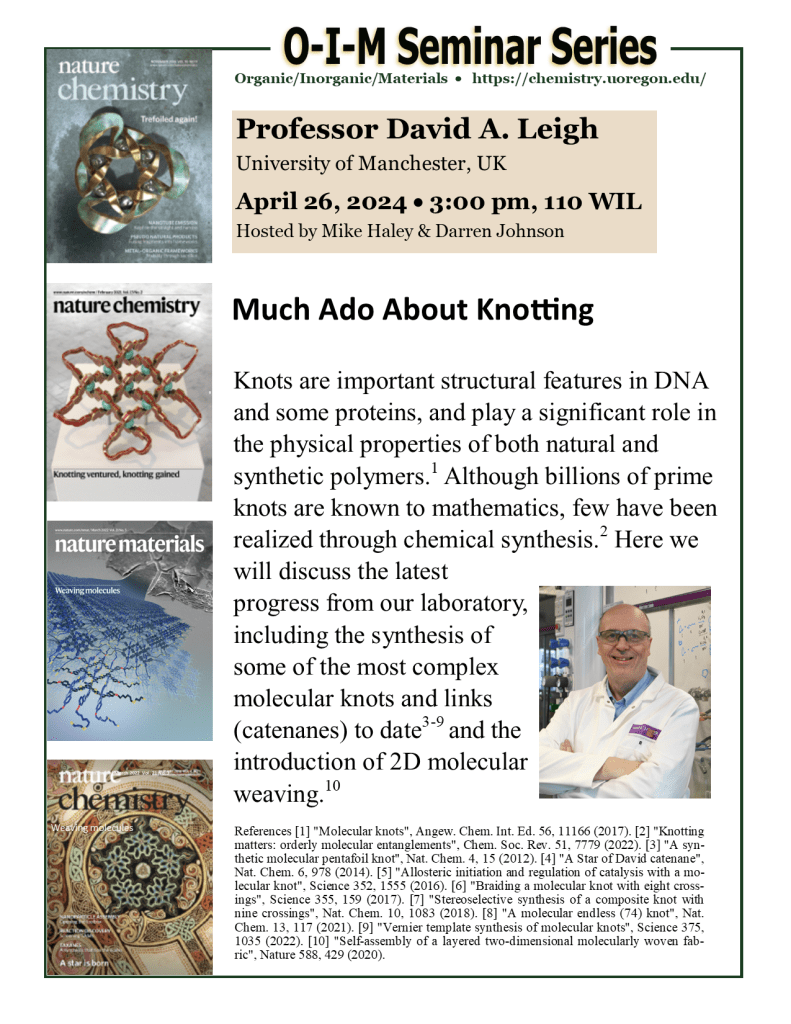 Organic-Inorganic-Materials Chemistry Seminar Series
Organic-Inorganic-Materials Chemistry Seminar Series
Department of Chemistry and Biochemistry
Professor David A. Leigh, University of Manchester, UK
April 26, 2024
3:00 pm, 110 Willamette Hall
Hosted by Mike Haley and Darren Johnson
Much Ado About Knotting
Knots are important structural features in DNA and some proteins, and play a significant role in the physical properties of both natural and synthetic polymers.1 Although billions of prime knots are known to mathematics, few have been realized through chemical synthesis.2 Here we will discuss the latest progress from our laboratory, including the synthesis of some of the most complex molecular knots and links (catenanes) to date3-9 and the introduction of 2D molecular weaving.10
References
[1] “Molecular knots”, Angew. Chem. Int. Ed. 56, 11166 (2017).
[2] “Knotting matters: orderly molecular entanglements”, Chem. Soc. Rev. 51, 7779 (2022).
[3] “A synthetic molecular pentafoil knot”, Nat. Chem. 4, 15 (2012).
[4] “A Star of David catenane”, Nat. Chem. 6, 978 (2014).
[5] “Allosteric initiation and regulation of catalysis with a molecular knot”, Science 352, 1555 (2016).
[6] “Braiding a molecular knot with eight crossings”, Science 355, 159 (2017).
[7] “Stereoselective synthesis of a composite knot with nine crossings”, Nat. Chem. 10, 1083 (2018).
[8] “A molecular endless (74) knot”, Nat. Chem. 13, 117 (2021).
[9] “Vernier template synthesis of molecular knots”, Science 375, 1035 (2022). [10] “Self-assembly of a layered two-dimensional molecularly woven fabric”, Nature 588, 429 (2020).

 Organic-Inorganic-Materials Chemistry Seminar Series
Organic-Inorganic-Materials Chemistry Seminar Series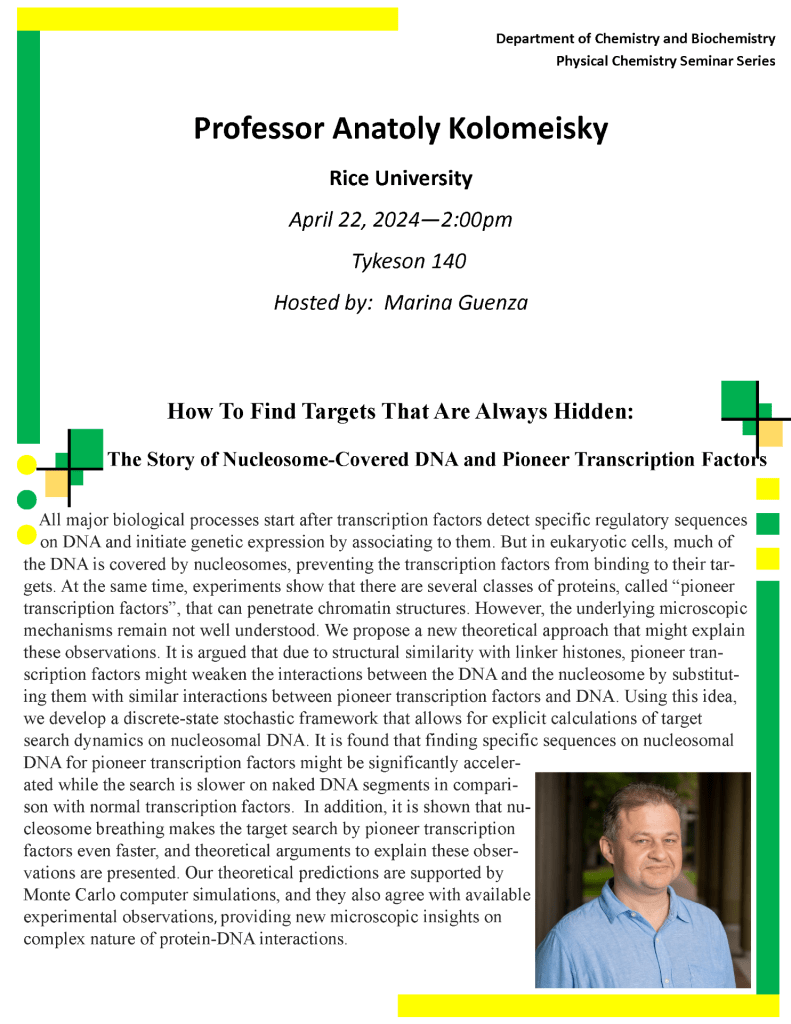
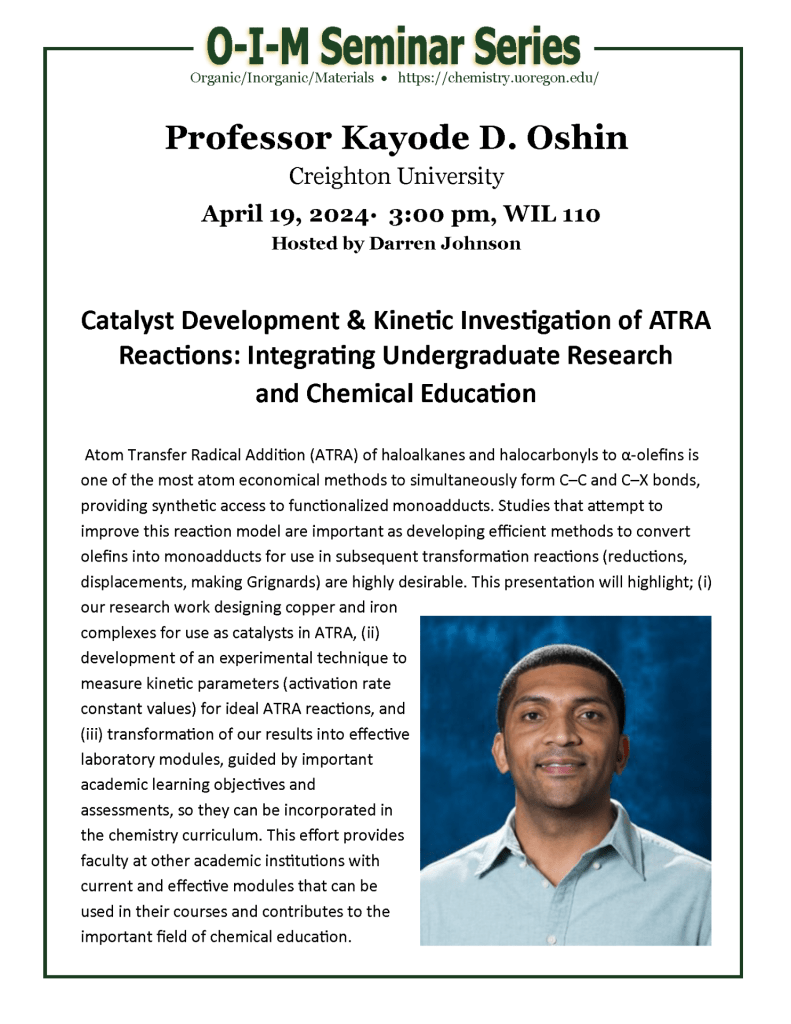 Organic-Inorganic-Materials Chemistry Seminar Series
Organic-Inorganic-Materials Chemistry Seminar Series
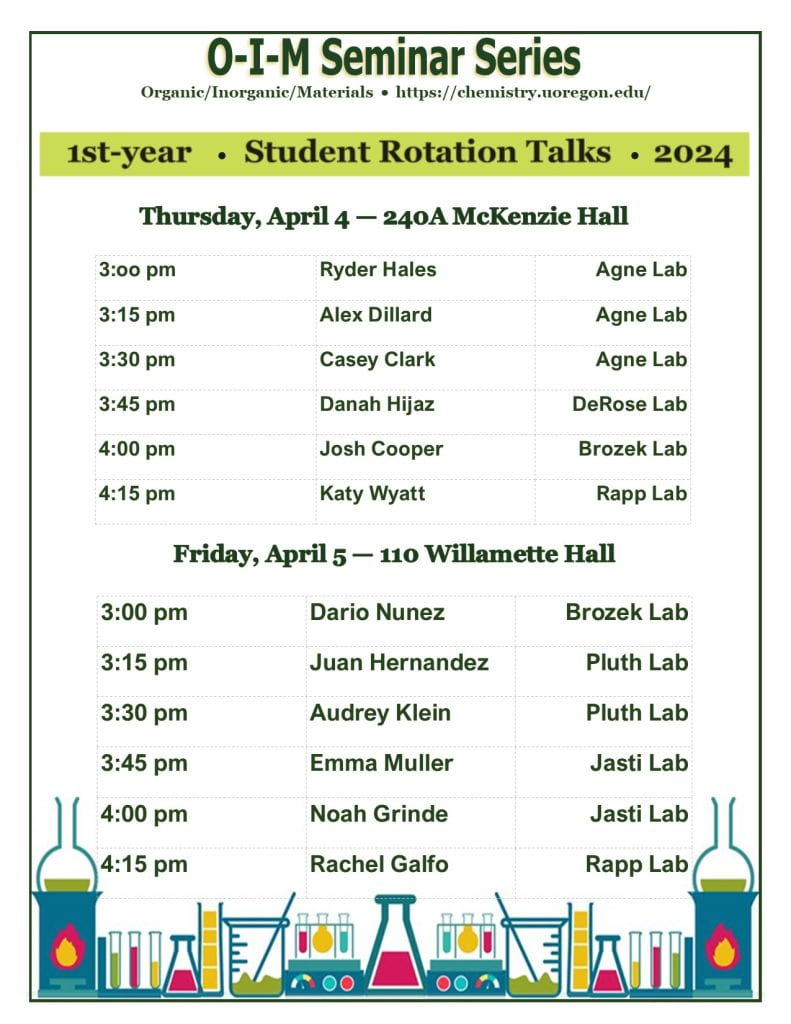 Organic-Inorganic-Materials Seminar Series
Organic-Inorganic-Materials Seminar Series